
Client
Nicholas Woolridge
Year
2020
Media
Zbrush
Blender 3D
Adobe Photoshop
Audience
Lay Public
About
This objective of this project was to sculpt a complex organic object with realistic texturing and lighting. I took on the additional challenge of a complex hair system as well as creating a mouth bag so as to make this an animation-ready asset. A fully modular and anatomically-accurate skeleton was also created from DICOM data obtained from the Kyoto University Primate Research Institute's (KUPRI) Digital Morphology Museum (DMM).
Final images
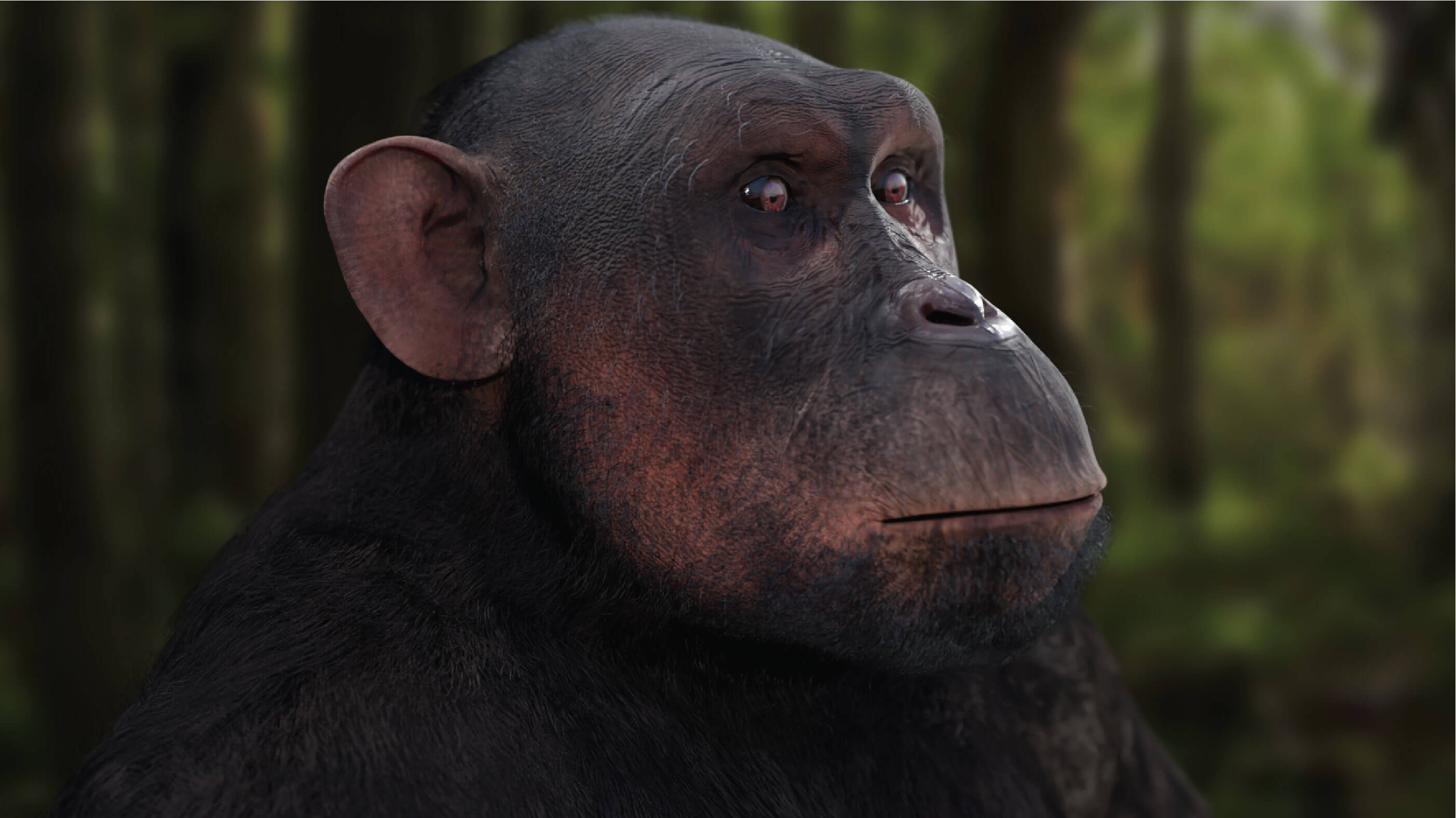
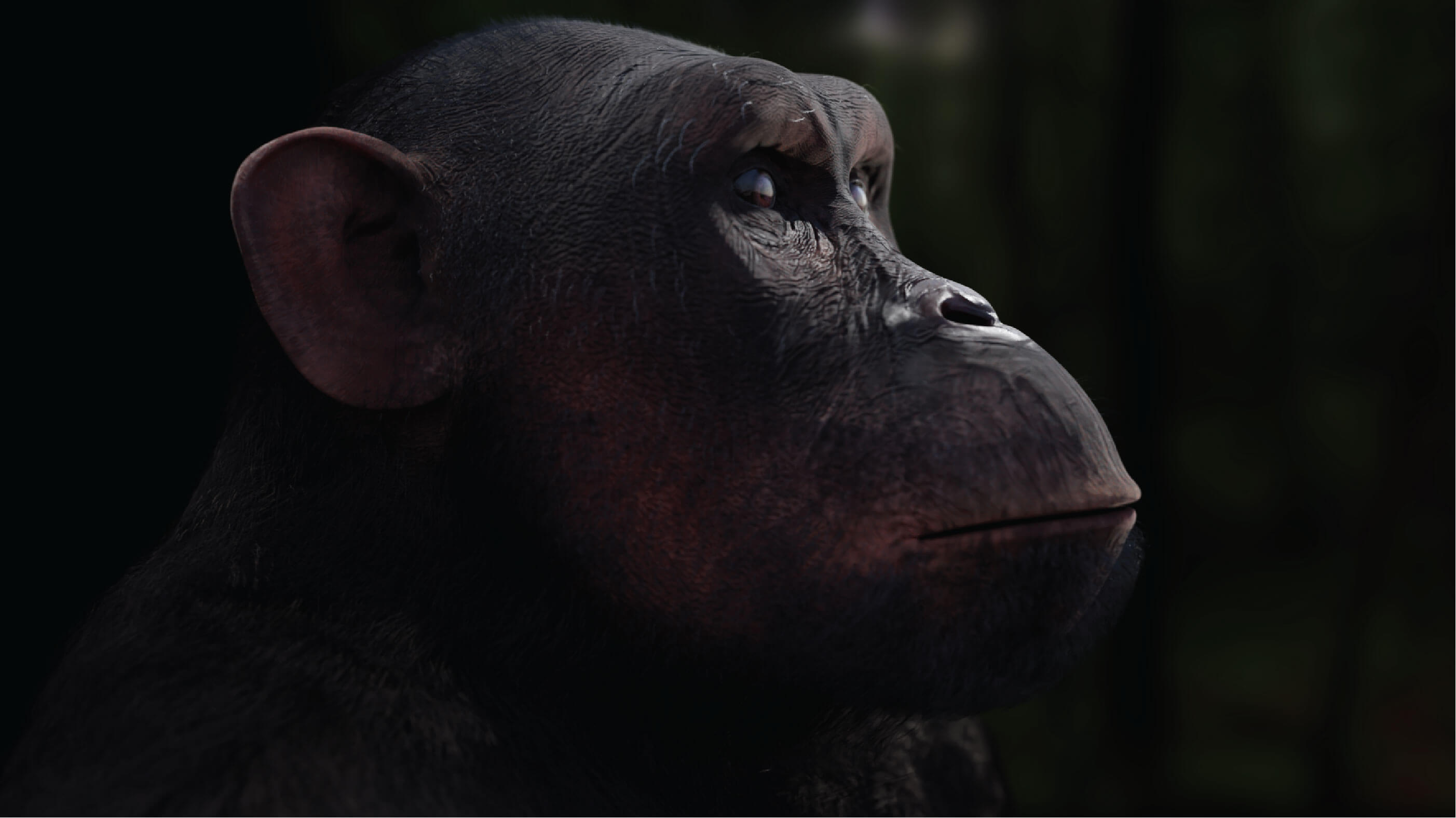
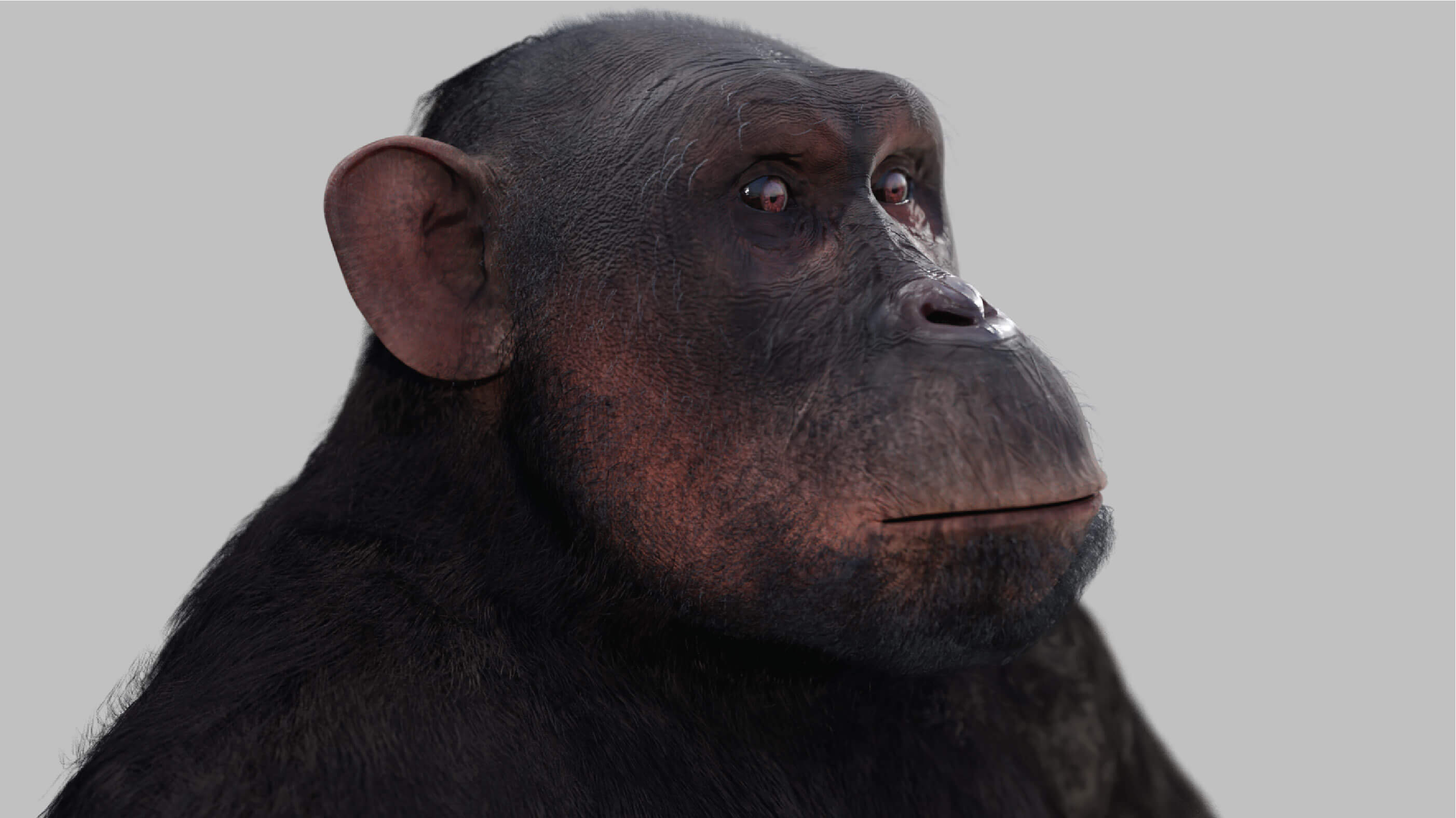
Process
Mood Board & Sketching
PureRef was used as the main tool to organize references for the project. A number of different images were collected to reference Chimpanzee proportions, facial details, fingers, toes, and correct topology flow. Rough sketches from different planes of reference were also created to understand the overall chimpanzee anatomy which gave me a better idea of proportions and how I should begin sculpting. These drawings served as a study, but were also used as a reference during the sculpting stage.
References and Sketches
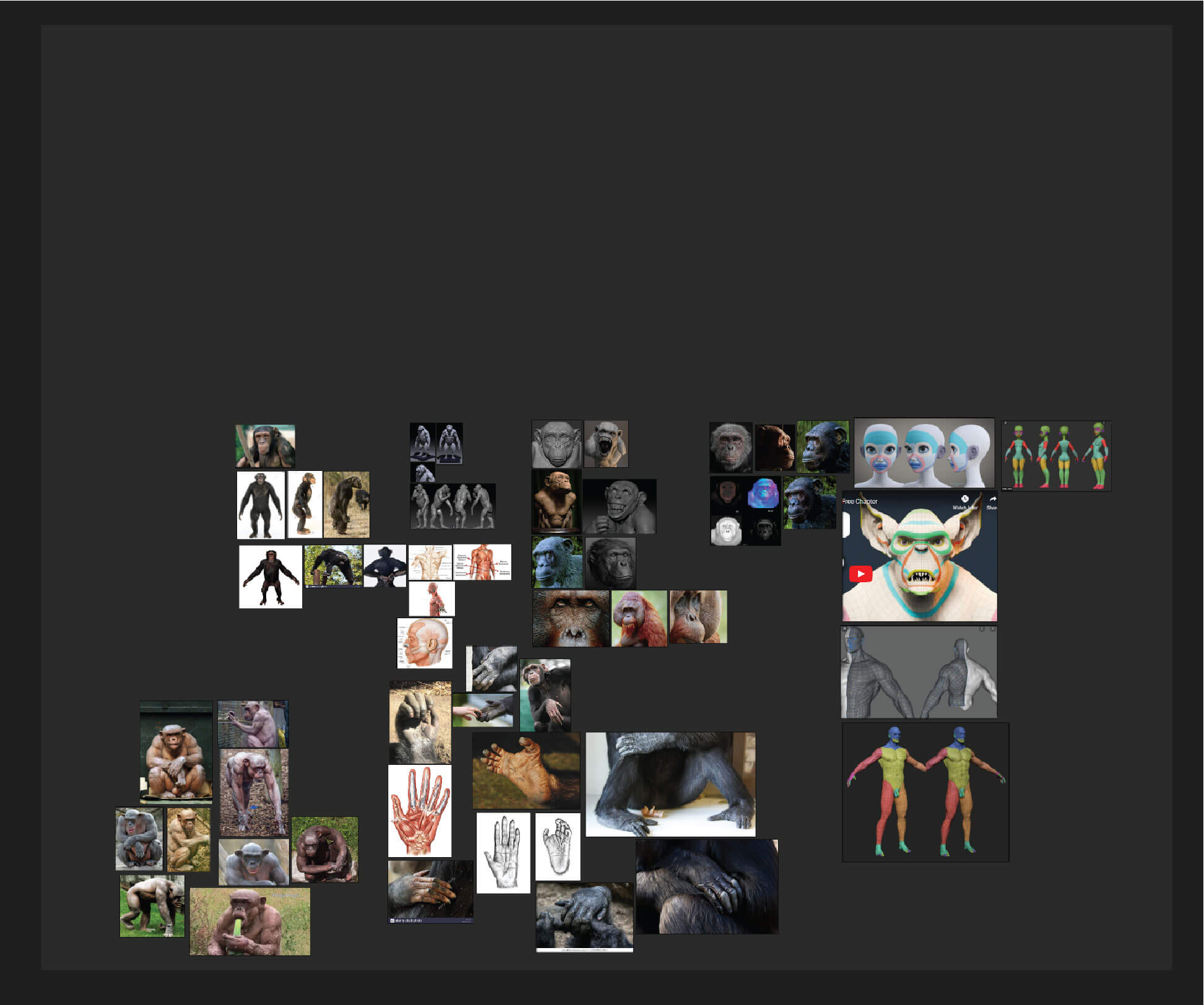
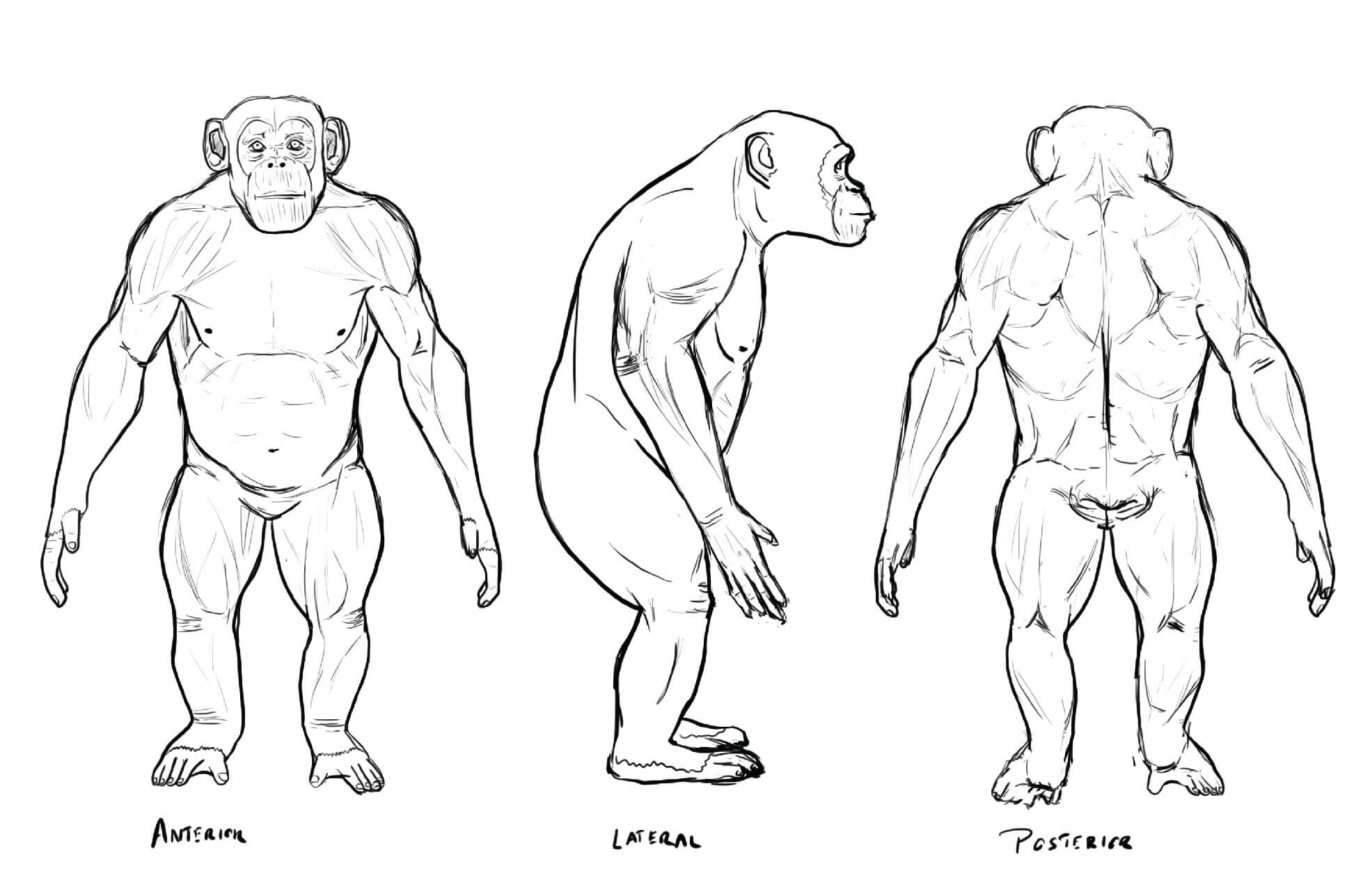
Sculpting
To sculpt the chimpanzee, I created a skeleton segmentation based on freely available CT data from Kyoto University. By creating a full body skeleton, I could confidently sculpt muscles and skin over it in order to get an accurate representation of chimpanzee proportions and muscle insertions. All sculpting was completed in Zbrush, primarily with the clay strips brush and alpha brushes for finer granular details.
Chimpanzee Sculpt


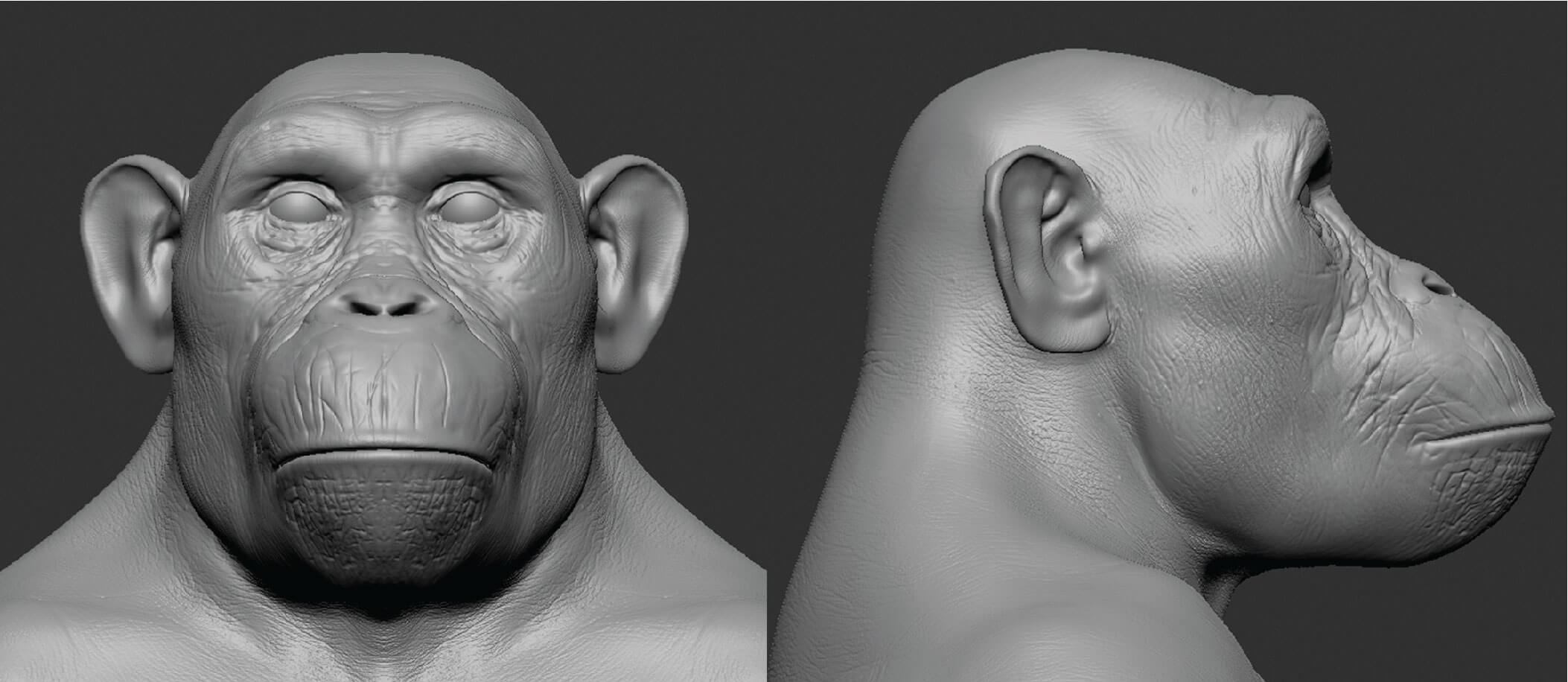
Texturing
UV map unwrapping was then completed in Blender 3D and exported back into Zbrush for polypainting and texture map baking. The texture maps I used include an albido map (top left), a normal map (top right), a vector displacement map (middle left), a roughness map (middle right), a specular map (bottom left), and a subsurface scatter map (bottom right). The final render was completed with the Blender 3D Cycles Engine and some minor post-processing was done in Adobe Photoshop.
UV Maps
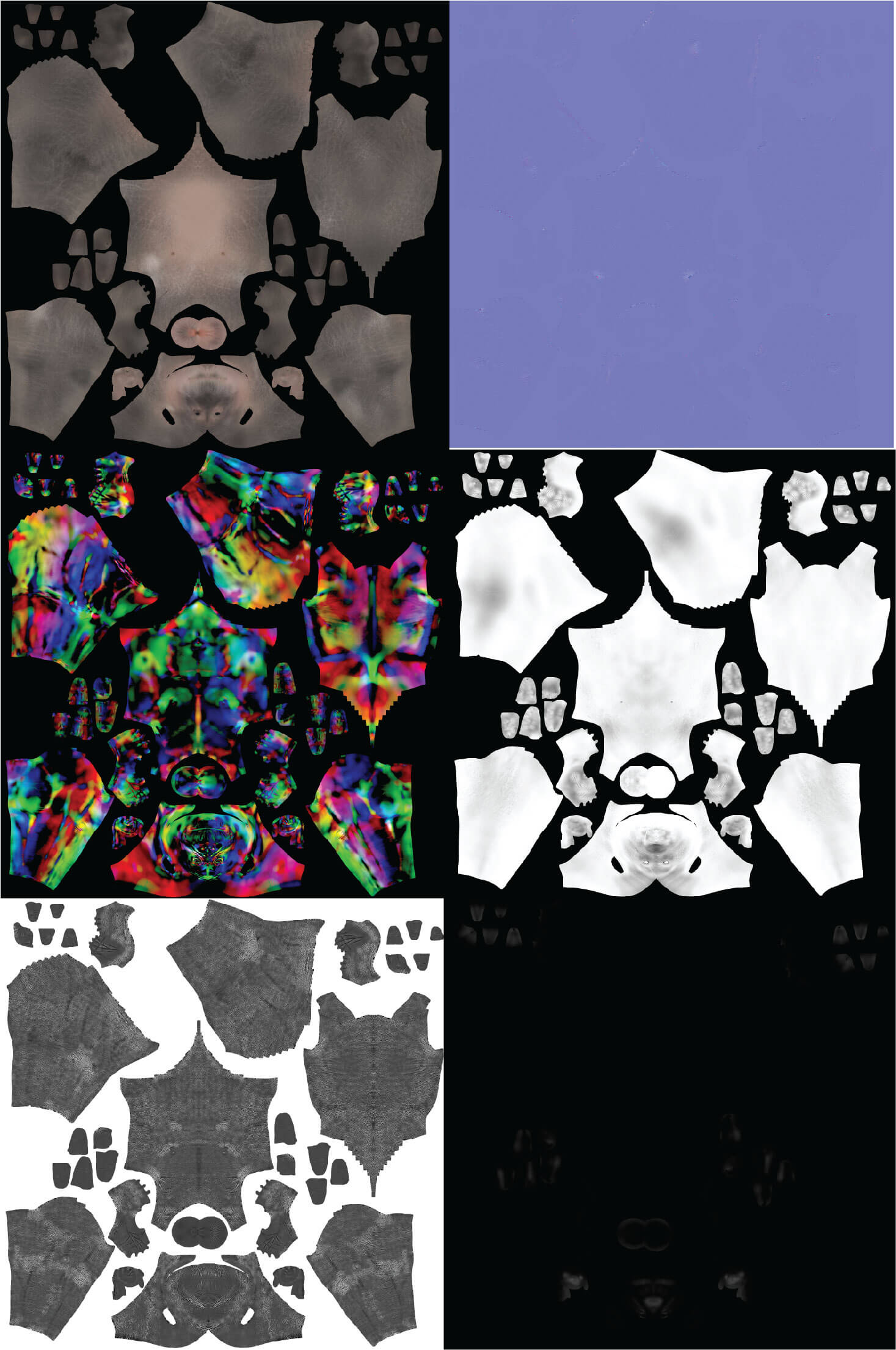
Layout & Render
A final mock layout was created to present the chimpanzee sculpt in a magazine as a fold-out article.
Mock fold-out magazine layout
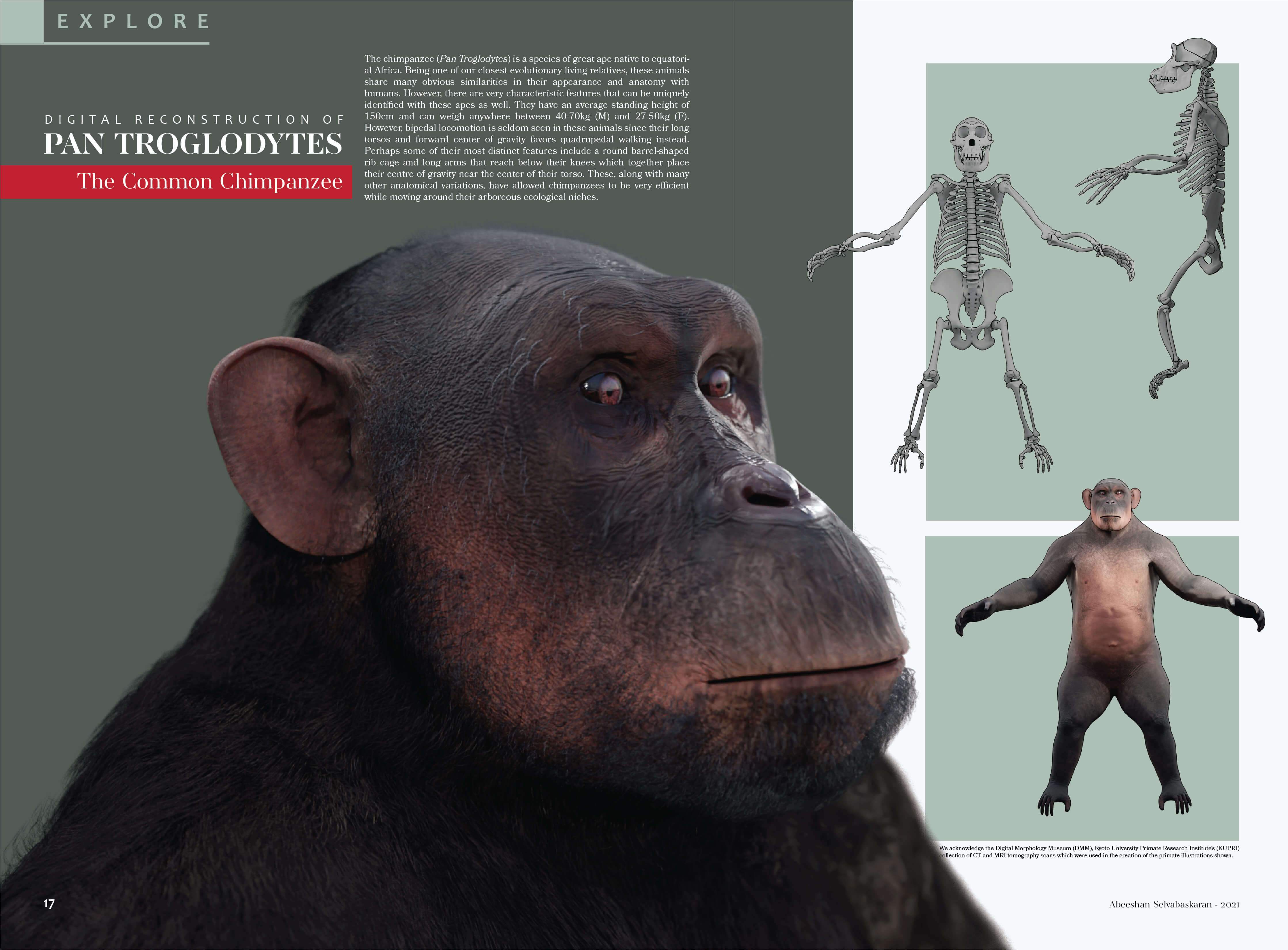
References
- Digital Morphology Museum, kupri. (n.d.). Retrieved February 22, 2022, from http://dmm.pri.kyoto-u.ac.jp/dmm/WebGallery/index.html